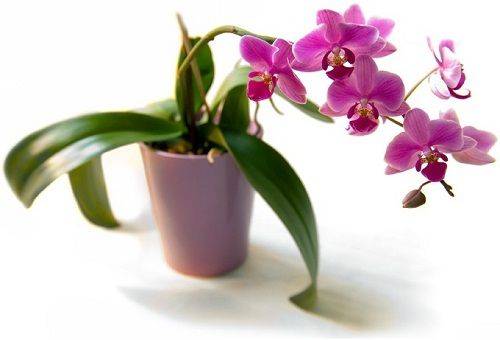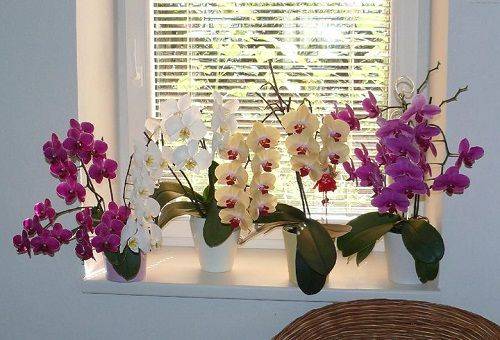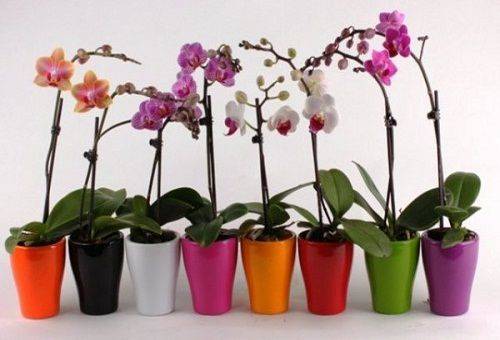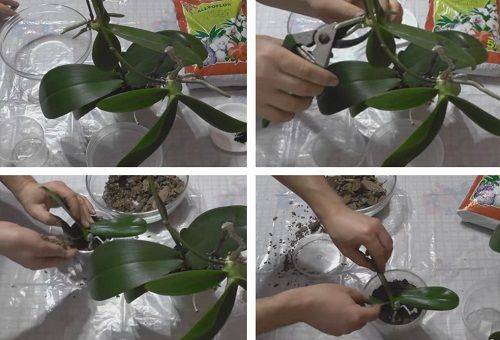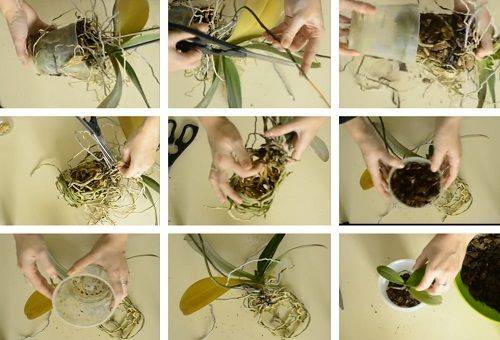How to care for orchids at home?
Content:
The unique flowering of orchids of various species is universal admiration, but only the growers themselves know what forces give such results, especially at home. Full-fledged flower care is not only the creation of an optimal environment at home and the high-quality implementation of systematic manipulations.
It is necessary to properly adapt the plant after arriving from the store, to prevent common diseases, to transplant the flower in time if necessary. Successful orchid cultivation at home is based on a long list of nuances and features that can scare beginner gardeners. Everything will turn out in the best possible way, only if you follow the basic recommendations of professionals and listen to the advice of experienced owners of capricious flowers.
How to adapt the flower after purchase?
Few people deal with orchids, growing them with seed, most often a flower appears in the apartment after buying in a specialized store. In this case, it is necessary to ignore the basic rules of specific care until the plant adapts to the new conditions. Particular attention should be paid to the following points:
- For two weeks, an indoor beauty should be quarantined. It is better to place it separately from the rest of the plantings, on an individual window sill or bedside table.
- Quarantine time is accompanied by protection from direct sunlight.
- From feeding, persistently offered by sellers of the store, for this period, it is also better to refuse.
- Watering the first time is also not required.
Within two weeks after the purchase, you only need to observe the leaves and roots of the plant, check whether pests or signs indicating diseases appear on them. At the end of the term, you can begin to water a little seedling and gradually accustom it to the sun. A transplant immediately after purchase is not required; in a good pot, the flower will live a couple of years without problems. Manipulation is carried out only if the orchid is planted in sphagnum.
Creating optimal conditions for the development of orchids: lighting, temperature, watering, top dressing
All types of plants are characterized by their whimsical nature. Therefore, proper care for them begins with the provision of suitable conditions.
Lighting requirements and its features:
- The fundamental factor responsible for the flowering of the orchid, its health. Even the reproduction of the plant, its size and appearance, depend on it. Only with sufficient light can we rely on the fact that growing a sample will give the desired result.
Tip: Some varieties of orchids, for example, Wanda, are so demanding on light and high humidity that, under inappropriate conditions, they rapidly lose the decorative appeal caused by leaves and flowers. Noticing such signals, you can quickly make adjustments to the care, preventing possible diseases.
- Direct sunlight is prohibited, light should be plentiful, but diffused. To create a shadow, it is recommended to use a matte film or opaque plastic.
- In autumn and winter, you can refuse to create a shadow. At this time, special attention will have to be paid to the length of daylight hours.If it is 10 hours or less, then an artificial light source should appear at home.
The temperature regime of orchids is also quite specific. All types of these plants can be divided into three groups:
- Love the heat. These include Dendrobium, Phalaenopsis, Cattleya (some varieties). Extreme indicators for the summer day period are 15-32ºС. In winter, even at night, data should not go beyond 15-18ºС. For a day at home or in a particular room, temperature differences are allowed within three degrees
- Adherents of medium temperatures. The most striking representative of the group is Miltonia. She prefers cooler conditions. In summer, the temperature should be kept within 18-22ºС, in winter at home 12-15ºС will be enough.
- Love the cool. This group includes Cumbria, Dendrobium Nobile, many Lelia. In summer, the optimum temperature will be 22ºС, in winter - within 12-15ºС.
Watering is another important point in orchid care. In nature, the roots of most varieties do not tolerate stagnation of moisture, and therefore are not in water. This explains the fact that growing under conditions of increased dryness is preferable for flowers than excessive watering. At the same time, we must not forget that certain types of plants are excessively demanding on this indicator:
- Oncidium and Dendrobium prefer a dry substrate, they need to be watered only after the earthy coma in the pot is completely dry.
- Phalaenopsis and Paphiopedillium prefer moist soil, but only if at least two weeks have passed since the purchase and the flower has fully adapted to the atmosphere of the new house.
- During active growth, flowering, ejection of peduncles, watering should be increased.
Tip: To assess the quality of care of beginner gardeners, namely, the adequacy of watering, you can simply by visual assessment of the orchid. If something starts to happen with the leaves and they wrinkle, and the pseudobulbs begin to dry out, this will be a sign of a lack of moisture. Rotting roots in combination with yellowing leaves indicate an excess of water.
In winter and during the rest period after flowering, the abundance of watering should be reduced. In conditions of coolness and lack of light, a room orchid will not need a lot of moisture. Rules for watering a capricious plant require the use of soft water. It can be settled for two days, thawed, boiled.
Watering itself has its own characteristics and can be done in two ways. In the first case, preferred for beginners, we put the plant directly in the pot in a container with prepared and slightly warm water. The second uses a plentiful shower. After the manipulation, the flower must be held on a grate so that excess water leaks out, otherwise the roots will rot.
The correct approach to the introduction of fertilizers raises many questions among beginners and experienced connoisseurs of orchids. In this case, it is recommended to study the advice of specialists for each specific type, but at the same time we must not forget about the basic rules:
- At home, the introduction of fertilizing should be carried out only during growth.
- Special products must be selected, using them strictly according to the instructions no more than once every 2-3 weeks.
- In winter, dressing flowers is strictly prohibited! This rule applies to all types and varieties of plants.
- A high concentration of mineral salts in the soil provokes illnesses, for this reason, during the feeding season, it is necessary to wash the soil with warm water.
If you keep the plant at home, it is better not to use fertilizers at all, limited to replacing the soil once every two years, at the moment when the transplant is carried out. An exception is an indoor dwarf orchid. On the contrary, it is sometimes recommended to feed it by adding mineral compounds directly to the water when its specific watering is performed.
Given the specifics of the growth of flowers in natural conditions, it is better not to mix the soil for them on their own, but to purchase it in a finished form. For example, Cymbidium, needs a heavy and damp substrate, which many other species do not accept.
Techniques and features of propagation of indoor orchids
If all the features of flower care at home are studied and no longer pose any problems, then reproduction of the plant will not cause difficulties. There are several options for the approach that the beginner can easily follow:
- Stalk offspring. A similar process can appear on the plant with an increased content of nitrogen in it. If such a formation is found, it is necessary to spray the flower more often and wait until the roots appear at the branch. Then we separate the young specimen, treat it with charcoal and plant it separately. Similar reproduction is possible in any season.
- Layering. In plants having cylindrical or elongated shoots, an air process may appear. In this case, you need to bend part of the stem and put a plastic greenhouse with a slot above it. Continuing to water the flower, especially its roots, we await the awakening of sleeping buds. When they wake up, continue moisturizing until the rooting. Only after this can the plant be propagated - it must be separated from the mother's shoot and transplanted into a separate pot.
- Rooted. The simplest version of the approach at home, but you can use it only after the flower reaches impressive size. We take the plant out of the pot, clean the roots of the soil, cut with garden shears, leaving at least three pseudobulbs on each part. We treat the slice with charcoal and place the samples in different containers. Reproduction is over, you only need to regularly water new plants.
- The seeds. A rather troublesome and complex process, the rules of which depend on the plant variety.
In addition, some orchids reproduce by leaves, but with this approach, the roots of the desired mass and density do not always appear, which often leads to the death of the plant.
How to care for the plant during flowering and after it?
If the cultivation of orchids at home is in compliance with all conditions, then it will bloom regularly. Caring for a flower in this case implies several features:
- Watering should be more frequent and plentiful, just do not forget to get rid of excess water so that there are no problems with the roots.
- We raise the night temperature by at least five degrees.
- Transplantation is prohibited at this moment, otherwise the flowers and buds will fall off.
- Top dressing is permissible and even desirable, but only to a limited extent.
- At the end of flowering, pruning of the peduncle is carried out. At the same time, the conditions of care are returning to traditional.
If the orchid is covered with shriveled, yellowed leaves and does not produce a peduncle, it must be moved to another place, and in a pinch, a transplant.
Common Diseases and Flower Pests
Fortunately, diseases and pests infect demanding flowers not often. This usually happens if care tips are not followed, or suitable conditions are not provided at home:
- Sagging leaves. It occurs as a result of damage to the roots or violation of the temperature regime.
- Cracks in the center of the sheet. The consequences are not only mechanical damage, but also a sharp temperature drop.
- The appearance on the leaves of black spots, growths, cones, holes. The result of direct sunlight.
- Silver web on the underside of leaves. Defeat with a spider mite. These pests can only be eliminated with the help of special preparations.
- Drying and rotting leaves. The consequences of the activity of soft-bodied ticks. Most often they are located in the center of outlets. To eliminate them, you will also have to use specialized chemicals.
- Slowed growth, rejection of flowering. May be the result of the appearance of nematoids, sucking juice from the plant. They are removed by nematicides, you need to act strictly according to the instructions.
Strict adherence to the recommendations allows counting on regular and magnificent flowering of the selected orchid variety. Some varieties can bloom even in winter, if you bring them correctly to the process and provide a quality dormant period.
Read an article about how to care for anthurium
